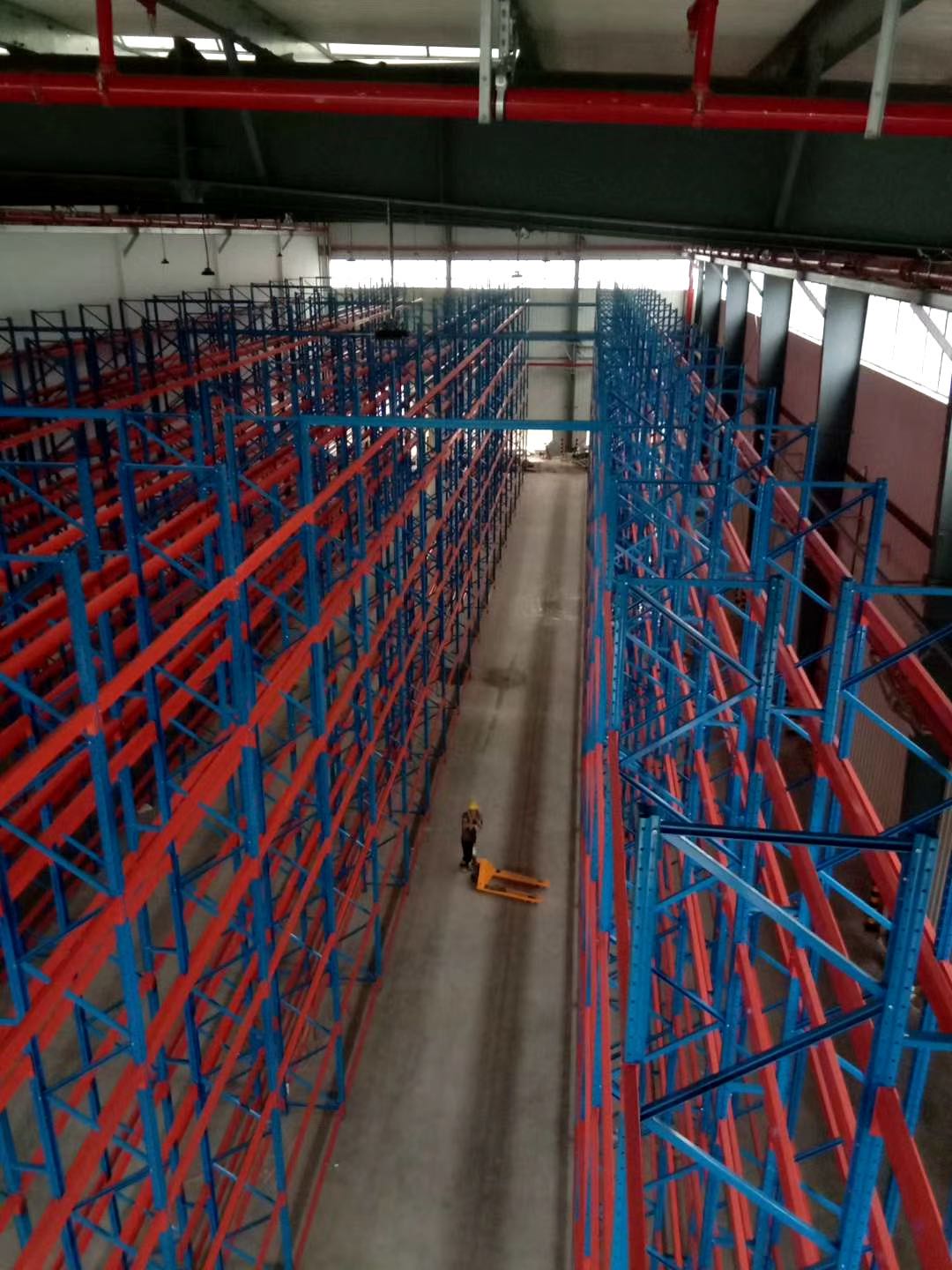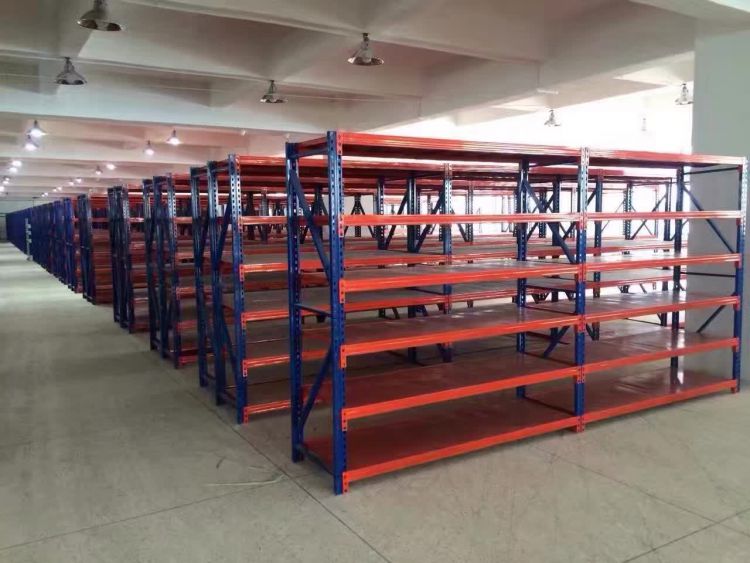In the relentless pursuit of optimizing warehouse space and reducing operational costs, storage density is paramount. Among the various pallet racking solutions available, drive-in racking stands out as a powerhouse for high-density storage, particularly suited for large quantities of similar products. This comprehensive guide delves deep into the world of drive-in racking, exploring its workings, benefits, limitations, variations, and ideal applications to help you determine if it's the right solution for your logistics challenges.

What is Drive-In Racking?
Drive-in racking is a specialized type of pallet storage system designed to maximize storage density by eliminating aisles between rows. Unlike selective racking where each pallet faces an aisle, drive-in racking structures consist of multiple pallets stored in depth within a single lane, one behind the other. Forklift trucks literally "drive-in" to these deep lanes to place or retrieve pallets. The system relies on a "Last-In, First-Out" (LIFO) or sometimes "First-In, First-Out" (FIFO) inventory management principle, depending on the configuration.
The core structure comprises upright frames supporting horizontal rails on either side of the lane. These rails form continuous tracks upon which pallets rest. Guide rails at the entrance and along the length help direct forklifts and protect the structure. Crucially, the building structure itself often acts as the rear support, or a dedicated back frame is used. This deep lane storage is the defining characteristic that gives drive-in racking its significant space-saving advantage.
How Drive-In Racking Works: The Mechanics
Understanding the operational workflow is key to appreciating drive-in racking:
Lane Structure: Pallets are stored in deep lanes, typically ranging from 3 to 10+ pallets deep, though 5-7 pallet depths are very common. Each lane is accessible only from the front.
Forklift Operation: A specialized counterbalance or reach truck equipped with guidance systems drives directly into the lane. The operator must navigate carefully within the confined space of the lane.
LIFO Principle (Most Common): The last pallet loaded into a lane is the first one retrieved. To access a pallet behind others, the operator must first remove the pallet(s) in front of it. This requires temporary staging space near the lane entrance.
Pallet Placement/Retrieval: The forklift places a pallet onto the rails at the required height and depth within the lane. Retrieval involves carefully lifting the pallet off the rails and reversing out of the lane.
Safety Features: Guide rails, column protectors, and bumper posts are essential to minimize damage to the racking and the building structure during truck entry and exit. Proper operator training is critical.

Key Advantages of Implementing Drive-In Racking
The primary motivation for choosing drive-in racking is its compelling set of advantages focused on density and cost:
Exceptional Storage Density: This is the undisputed champion benefit. By drastically reducing the number of aisles required (only one access aisle per bay depth, not per row), drive-in racking can increase storage capacity by up to 75% or more compared to selective racking for the same footprint. It utilizes the cubic space of the warehouse more intensely than almost any other pallet system.
Reduced Aisle Space Requirements: Significantly fewer aisles translate directly into more available space for actual storage. This is especially valuable in facilities with high land or rental costs.
Lower Initial Investment per Pallet Position: While the rack structure itself can be complex, the high density achieved means the cost per individual pallet position stored is often lower than many other racking types, offering a strong return on investment for suitable SKUs.
Ideal for Bulk Storage & Slow-Moving Goods: Drive-in racking excels at storing large quantities of identical products (high SKU quantities) with lower turnover rates. It's perfect for seasonal items, raw materials, or finished goods held in reserve.
Optimized Warehouse Cube Utilization: By building upwards and storing deep, drive-in racking makes highly efficient use of the available height, width, and depth of the warehouse, maximizing the use of the entire cubic volume.
Limitations and Considerations for Drive-In Racking
While powerful, drive-in racking isn't a universal solution. Important limitations must be weighed:
LIFO Inventory Management (Predominantly): The standard LIFO access restricts direct access to pallets stored deeper in the lane. This is unsuitable for products requiring strict FIFO rotation (like perishables) unless a specific FIFO configuration is used (less common and potentially less dense).
Reduced Accessibility & Slower Throughput: Accessing a specific pallet, especially one deep within a lane, requires moving intervening pallets. This "shuttle" or "digging" process takes significantly longer than accessing a pallet directly from an aisle in selective racking. Throughput per lane is lower.
Increased Forklift Operating Costs & Complexity: Operating within the confined lanes requires skilled operators, specialized guidance systems on trucks (like rail guides or wire guidance), and often results in slower operating speeds. Maneuvering is more complex, increasing the risk of accidents and rack damage. Truck maintenance costs might be higher.
Higher Risk of Product & Rack Damage: The close proximity of pallets and the requirement for precise maneuvering within the lane increase the potential for accidental impacts, damaging both the stored goods and the racking structure itself. Quality pallets are essential.
Requires Uniform Pallets & Loads: Drive-in racking relies on consistent pallet dimensions and load stability. Non-standard or damaged pallets can jam lanes or cause instability. Load heights must be uniform within a lane.
Structural Requirements & Cost: The racking structure is complex and needs to be robust to withstand potential impacts. It often requires anchoring to the floor and may need specific building column spacing. Installation can be more intricate and costly than selective racking upfront, though the cost per pallet position is often favorable.
Drive-In Racking Variations and Related Systems
While traditional drive-in racking uses LIFO access, there are variations and related systems:
Drive-Through Racking: This system allows access from both ends of the lane. Forklifts drive in one end and out the other. This enables true FIFO inventory management, as the first pallet loaded at one end is the first unloaded at the opposite end. While offering FIFO, it requires access aisles at both ends, slightly reducing overall density compared to single-entry drive-in racking.
Push-Back Racking: Often confused with drive-in racking, push-back operates on a LIFO principle but uses wheeled carts on inclined rails within each vertical level. Pallets are "pushed back" by the loading of subsequent pallets and "roll forward" for retrieval. It offers better selectivity within a lane than drive-in racking (accessing the first pallet doesn't require moving others on that level) but typically has fewer pallet positions deep per lane (2-5) and is more expensive per pallet position than drive-in racking.
Mobile Pallet Racking: Entire rows of racking (often selective, but sometimes drive-in racking) are mounted on motorized bases that move laterally on rails embedded in the floor. Only one aisle is opened at a time. This offers very high density with full selectivity but involves significant mechanical complexity, cost, and floor preparation. Drive-in racking within a mobile system is less common but possible for ultra-high-density needs.
When is Drive-In Racking the Optimal Choice?
Drive-in racking shines brightest in specific operational scenarios:
High Volume, Low SKU Count: Storing very large quantities of a limited number of SKUs. Think beverages, canned goods, specific raw materials, or seasonal products bought in bulk.
Slow to Medium Turnover: Products that don't require frequent picking of individual pallets deep within a lane. Ideal for reserve storage, overflow, or long-term holding.
Stable, Uniform Loads on Standard Pallets: Consistent pallet size, load dimensions, and weight are non-negotiable for safe and efficient operation.
Space Constraints & High Real Estate Costs: When maximizing pallet positions within a fixed footprint is the top priority, outweighing the need for high-speed access to every pallet.
Bulk Storage Needs: Where the primary requirement is storing large quantities securely and densely, rather than rapid order picking or strict FIFO.
Designing and Implementing a Drive-In Racking System
Successful implementation requires careful planning:
Thorough Needs Analysis: Evaluate SKU profiles, pallet specs, inventory turnover, required capacity, and throughput demands. Is LIFO acceptable?
Detailed Warehouse Layout Planning: Optimize lane depth (balancing density vs. accessibility), number of lanes, lane heights, and overall system layout considering building columns, clear heights, sprinkler systems, and fire codes. Maximizing lane depth increases density but reduces accessibility.
Forklift Compatibility: Ensure the chosen forklifts (counterbalance or reach) have the necessary lift height, mast type (standard or pantograph), guidance systems (rail, wire, camera), and maneuverability for the lane width and height. Lane width is critical and depends on forklift width plus safety clearance.
Structural Engineering: The racking design must be engineered for the specific loads, seismic zone (if applicable), and building structure. Proper anchoring is vital. Consider potential impact loads.
Safety First: Prioritize high-quality pallets, stringent operator training programs, clear lane markings, comprehensive safety signage, robust column protectors, guide rails, and bumper posts. Regular rack inspections are mandatory.
Professional Installation: Engage experienced installers familiar with the complexities of drive-in racking systems.
Drive-in racking remains a vital tool in the warehouse optimization arsenal, offering unparalleled storage density for specific inventory profiles. Its ability to dramatically reduce aisle space and maximize pallet positions per square foot makes it a cost-effective solution for bulk storage of slow-moving goods with high SKU volumes. While its LIFO access and slower throughput are inherent limitations, understanding these trade-offs is key. When applied correctly to suitable inventory – characterized by uniformity, stability, and lower access frequency – drive-in racking delivers significant space and cost savings. Careful planning, precise design, compatible equipment, and rigorous safety protocols are essential to unlock the full potential and operational efficiency of a drive-in racking system, transforming warehouse space into a highly dense storage powerhouse.







